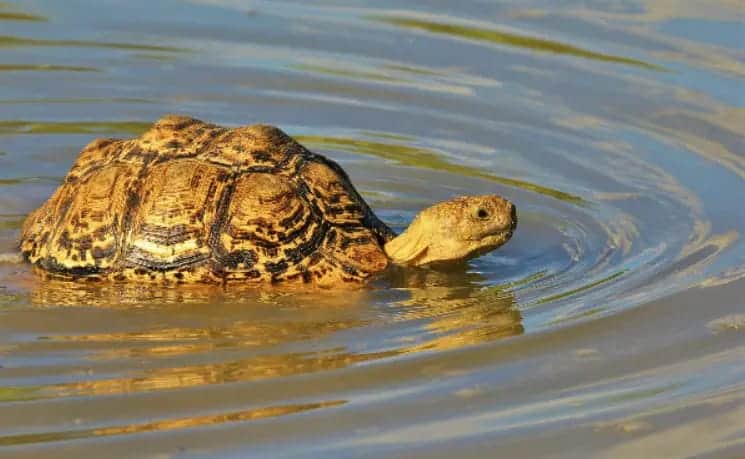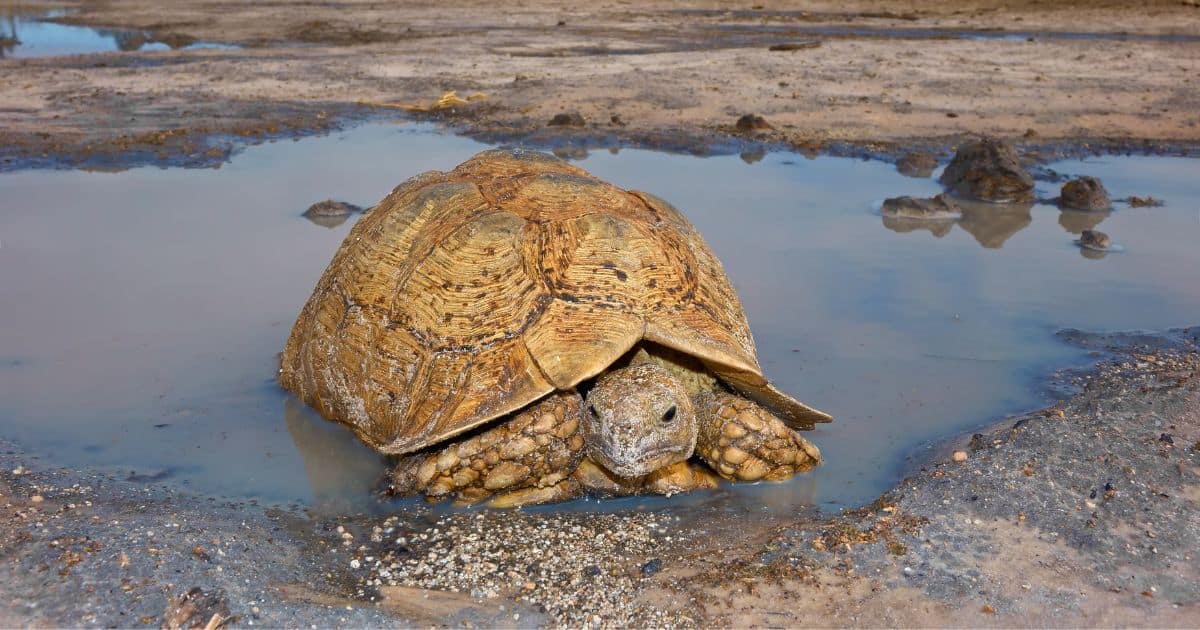Can tortoise swim? Tortoises cannot swim naturally and may drown if placed in deep water. However, the debate surrounding whether or not tortoises can swim has been a topic of discussion among scientists and tortoise enthusiasts for many years.
Some argue that tortoises are not capable of swimming due to their heavy shells and slow movement on land, while others believe that they have the ability to swim, albeit not as gracefully as other aquatic animals.
Understanding the swimming abilities of tortoises is important for their conservation and welfare, as it can help inform decisions regarding their habitat and care.
The Anatomy of a Tortoise: Understanding their Physical Capabilities
To understand the swimming abilities of tortoises, it is important to first examine their anatomy. Tortoises have a unique skeletal structure that is adapted for life on land.
Their shell, which consists of a carapace (top shell) and plastron (bottom shell), provides protection and support but also adds weight, making them less buoyant in water.
Additionally, their limbs are designed for walking on land rather than propelling them through water. Their respiratory system is also adapted for terrestrial life, with lungs that are not well-suited for underwater respiration.
Observations in the Wild: Do Tortoises Swim Naturally?
Observations of tortoises in their natural habitat have provided valuable insights into their swimming abilities. While tortoises are primarily terrestrial animals, they have been observed entering bodies of water such as ponds and rivers.
However, their behavior in water is often different from that of true aquatic animals. They tend to move slowly and rely on buoyancy to stay afloat rather than actively swimming.
Tortoise Behavior in Water: An Analysis of their Movements and Techniques
When tortoises do enter the water, they exhibit unique movements and techniques that differ from those of other aquatic animals. They use their limbs to paddle through the water, but their slow movement and heavy shell make them less efficient swimmers.
They also have the ability to dive, although they are not as agile underwater as other aquatic animals. Their swimming speed is relatively slow compared to other animals, but they are capable of covering short distances in water.
The Role of Buoyancy: How Tortoises Stay Afloat in Water
Buoyancy plays a crucial role in the swimming abilities of tortoises. While their heavy shells make them less buoyant than other aquatic animals, they have adaptations that help them stay afloat.
The shape of their shell and the presence of air spaces within it contribute to their buoyancy. Additionally, tortoises can adjust the amount of air in their lungs to control their buoyancy in water.
The Impact of Habitat: How Aquatic Environments Affect Tortoise Swimming
The type of aquatic environment that tortoises inhabit can have a significant impact on their swimming abilities. Tortoises that live in areas with calm, shallow waters are more likely to enter the water and exhibit swimming behaviors.
In contrast, tortoises in areas with fast-moving or deep waters may be less inclined to swim due to the increased difficulty and potential risks associated with these environments.
The Debate on Domestic Tortoises: Can They be Trained to Swim?
The debate on whether domestic tortoises can be trained to swim is a contentious one. Some believe that with proper training and acclimation, domestic tortoises can learn to swim and enjoy the water.
Others argue that it is unnatural and potentially harmful to force tortoises into swimming activities. It is important for tortoise owners to consider the individual needs and preferences of their pets before attempting to introduce them to water.
The Risks of Tortoise Swimming: Potential Dangers and Safety Precautions
While swimming can be an enjoyable activity for tortoises, there are potential risks associated with it. Tortoises can become exhausted or stressed in the water, especially if they are not accustomed to swimming.
They may also be at risk of drowning if they are unable to reach the surface for air. It is important for tortoise owners to take safety precautions when allowing their pets to swim, such as providing a shallow and safe environment, supervising them closely, and ensuring they have a way to easily exit the water.
The Evolution of Tortoise Swimming: Tracing the History of their Aquatic Abilities
The evolution of tortoise swimming is a fascinating topic that has been studied by scientists. Fossil evidence suggests that early tortoises had more aquatic adaptations than their modern counterparts.
Over time, as tortoises adapted to life on land, their swimming abilities likely diminished. However, some species of tortoises have retained certain aquatic behaviors and adaptations, indicating that their swimming abilities have not been completely lost.
The Importance of Tortoise Conservation: Preserving their Natural Habitat and Behaviors
Understanding and preserving the natural habitat and behaviors of tortoises is crucial for their conservation. By protecting their habitats and ensuring that they have access to suitable aquatic environments, we can help maintain their natural behaviors, including swimming.
Conservation efforts should also focus on educating the public about the importance of preserving tortoise habitats and respecting their natural behaviors.
The Ongoing Debate and Future Research on Tortoise Swimming
The debate surrounding tortoise swimming abilities is likely to continue as scientists and enthusiasts seek to better understand these fascinating creatures. Further research is needed to explore the swimming abilities of different tortoise species and how they are influenced by factors such as habitat, anatomy, and behavior. By gaining a deeper understanding of tortoise swimming abilities, we can ensure the well-being and conservation of these unique animals.


